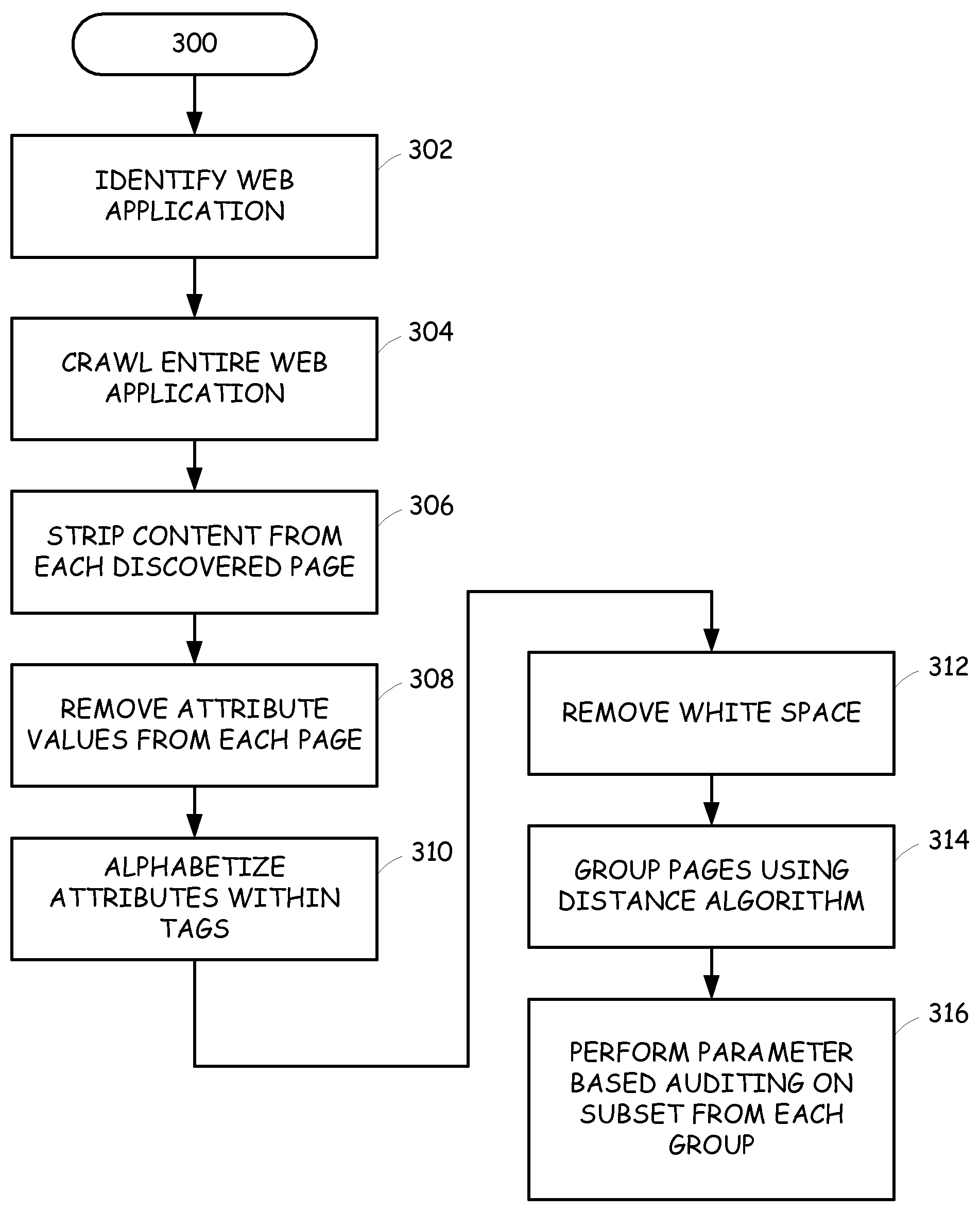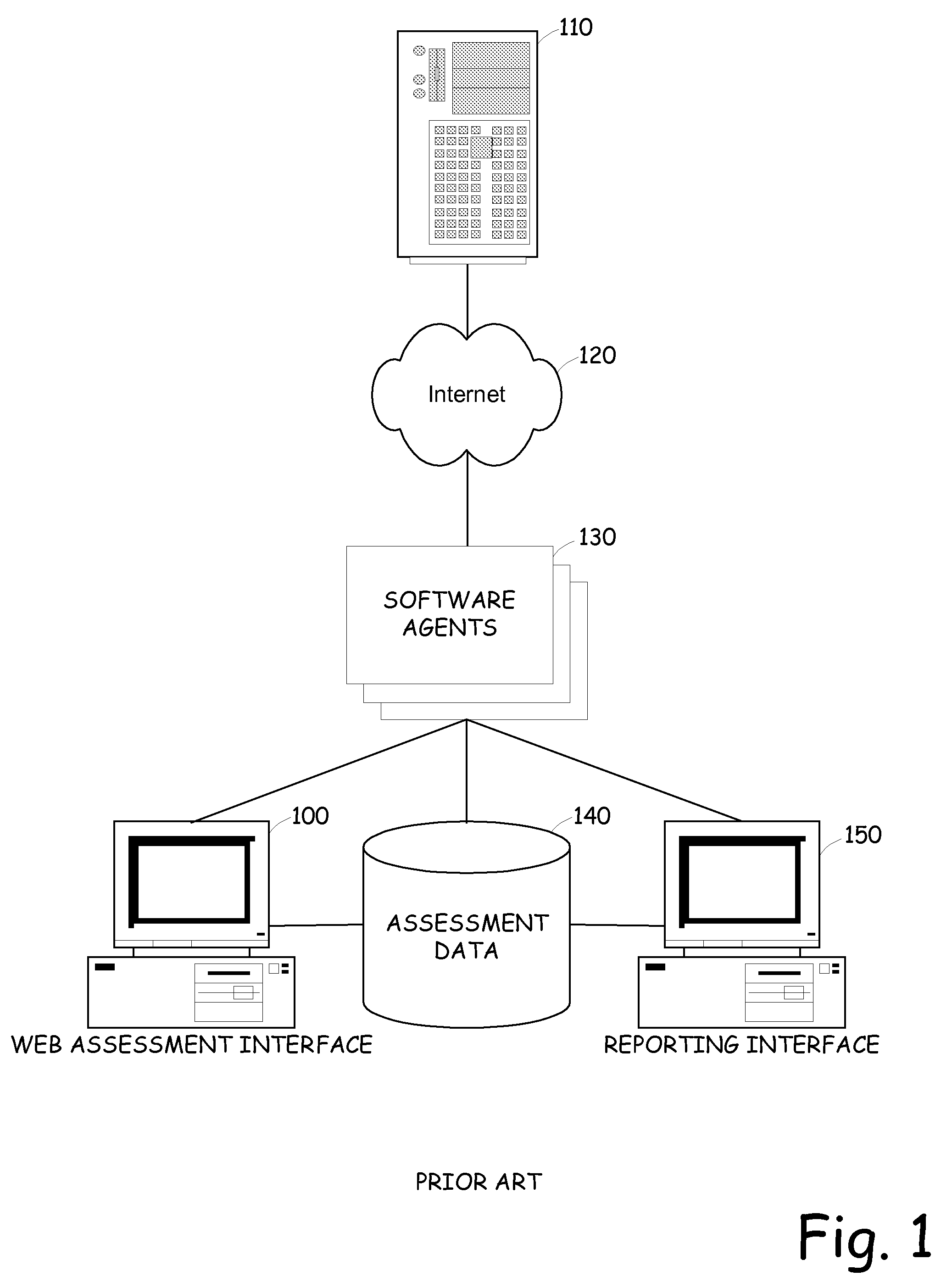Web application auditing based on sub-application identification
a sub-application and auditing technology, applied in the field of vulnerability analysis of web sites, can solve the problems unable to apply wisdom, and quickly consuming memory, so as to achieve the effect of limiting the scope of vulnerability assessmen
- Summary
- Abstract
- Description
- Claims
- Application Information
AI Technical Summary
Benefits of technology
Problems solved by technology
Method used
Image
Examples
Embodiment Construction
[0036]The present invention decreases the amount of processing time required to perform an audit of web applications by limiting the audit to focus on sub-applications within the web application that are used to create the content, rather than attempting to audit the entire web application. More specifically, a web application is actually a collection of multiple sub-applications that are invoked at various times during a session with a web application and that generate the rendered content to a user. For example, a web application may include one or more of the following sub-applications as non-limiting examples: site search engine, story serving / templating system, email alert system, survey form system, company stock profile system, feedback forms, contact by email, content presentation application, download engine, or the like. Rather than auditing the parameters of every page of a web application, the present invention operates to identify the sub-applications within a web appli...
PUM
 Login to View More
Login to View More Abstract
Description
Claims
Application Information
 Login to View More
Login to View More - R&D
- Intellectual Property
- Life Sciences
- Materials
- Tech Scout
- Unparalleled Data Quality
- Higher Quality Content
- 60% Fewer Hallucinations
Browse by: Latest US Patents, China's latest patents, Technical Efficacy Thesaurus, Application Domain, Technology Topic, Popular Technical Reports.
© 2025 PatSnap. All rights reserved.Legal|Privacy policy|Modern Slavery Act Transparency Statement|Sitemap|About US| Contact US: help@patsnap.com



